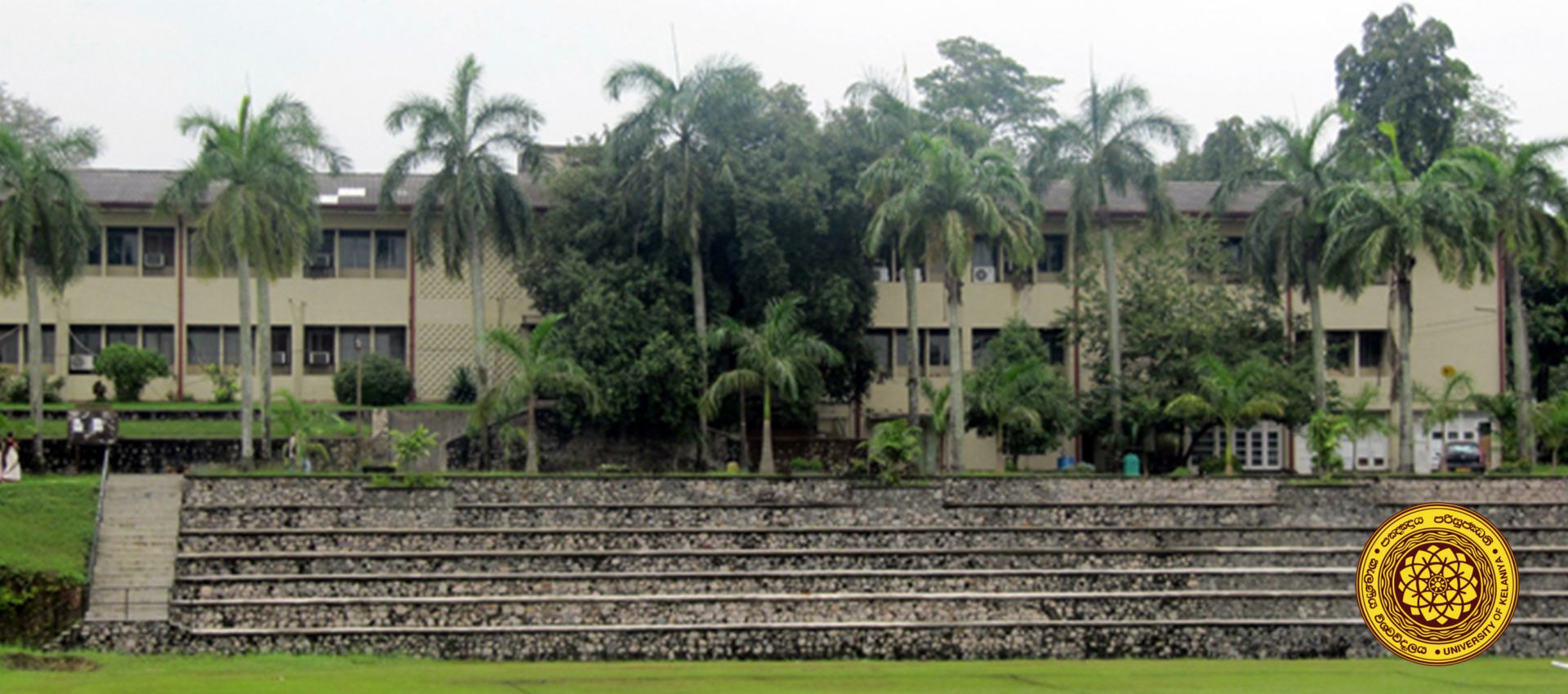The University of Peradeniya site touches the natural environment of the lower slopes of the Hanthana mountain range.[citation needed] The university is in the Central Province, 8 km (5.0 mi) from the centre of Kandy (the historic capital of the last kingdom of Sri Lanka) and about 110 km (68 mi) from Colombo. The Botanical Garden of Peradeniya is close by.
The university spans nearly 700 ha (1,700 acres) in the Mahaweli flood plain. Most of the area remains afforested. The climate around the university is mild, and the temperature fluctuates between 18 and 30 °C (64 and 86 °F).
The main entrance to the university is through Galaha road. The Faculty of Engineering is on one side of the Mahaweli River and all other faculties are on the other side. The Akbar bridge links the two banks of the river. Considered as a marvel of civil engineering, it was designed by A. Thurairajah (Dean of the Faculty of Engineering, 1975–77 and 1982–85), and built by the first batch of the faculty, in the year of its inception.
The Sarasavi Uyana railway station is on campus. Another bridge known as Yaka Paalama links the railway to the other bank. Daily shuttle bus services operate from Kandy to Galaha junction and Kandy to the university.
A separate sub-campus was established in 1968 at Mahailuppallama, North Central province for the Faculty of Agriculture.[4] Separate residential facilities are provided to this sub-campus.
The proposal for the establishment of University of Ceylon, the first university of Sri Lanka (the predecessor of the University of Peradeniya) goes back to 1899.[3] But no progress was seen until the formation of the Ceylon University Association in 1906 under the guidance of Sir Ponnambalam Arunachalam, Sir James Peiris and Sir Marcus Fernando. Its request for a European-style university in Sri Lanka was partially granted by the British rulers with the formation of Ceylon University College on 1 January 1921.
The University Council, through which the administration of the Ceylon University College was done, appointed committees to plan the academic activities of a future university.[3] It made suggestions to build the university in Bullers Road (now Bauddhaloka Mawatha) in Colombo, but it was disputed by politicians. To resolve the conflict, the then Governor Hugh Clifford appointed a committee headed by Justice M. T. Akbar on 20 December 1926. It suggested that the proposed university should be unitary, residential and outside Colombo. Another committee was appointed in 1928 with Sir Walter Buchanan-Riddel as chairman. The committee initially proposed a site at Uyanawatta, in the Dumbara Valley close to Kandy. H. B. Lees, the Director of Public Works however proposed Mavilmada and Austin Woodeson, the Chief Architect recommended Aruppola, both on the Kandy side of the Dumbara Valley as better sites than Uyanawatta. Dr. Samuel Chelliah Paul and Andreas Nell pointed out the disadvantages of those sites and proposed a larger one at Peradeniya.[5]
In 1938 the government acquired the plot and developed an area about 150 ha (370 acres) (out of 700 ha (1,700 acres)) to create the University Park.[6]
Although the site was acquired, no plans were made to establish the university until 1941. With the arrival of Sir Ivor Jennings, as the second principal of the Ceylon University College, establishment plans were put into effect. He stressed the urgent need to move the university to Peradeniya to the Minister of Education C. W. W. Kannangara and took the initiative in the process. Thus he is considered the forefather of the University of Peradeniya.[7]
The proposal for the establishment of University of Ceylon, the first university of Sri Lanka (the predecessor of the University of Peradeniya) goes back to 1899.[3] But no progress was seen until the formation of the Ceylon University Association in 1906 under the guidance of Sir Ponnambalam Arunachalam, Sir James Peiris and Sir Marcus Fernando. Its request for a European-style university in Sri Lanka was partially granted by the British rulers with the formation of Ceylon University College on 1 January 1921.
The University Council, through which the administration of the Ceylon University College was done, appointed committees to plan the academic activities of a future university.[3] It made suggestions to build the university in Bullers Road (now Bauddhaloka Mawatha) in Colombo, but it was disputed by politicians. To resolve the conflict, the then Governor Hugh Clifford appointed a committee headed by Justice M. T. Akbar on 20 December 1926. It suggested that the proposed university should be unitary, residential and outside Colombo. Another committee was appointed in 1928 with Sir Walter Buchanan-Riddel as chairman. The committee initially proposed a site at Uyanawatta, in the Dumbara Valley close to Kandy. H. B. Lees, the Director of Public Works however proposed Mavilmada and Austin Woodeson, the Chief Architect recommended Aruppola, both on the Kandy side of the Dumbara Valley as better sites than Uyanawatta. Dr. Samuel Chelliah Paul and Andreas Nell pointed out the disadvantages of those sites and proposed a larger one at Peradeniya.[5]
In 1938 the government acquired the plot and developed an area about 150 ha (370 acres) (out of 700 ha (1,700 acres)) to create the University Park.[6]
Although the site was acquired, no plans were made to establish the university until 1941. With the arrival of Sir Ivor Jennings, as the second principal of the Ceylon University College, establishment plans were put into effect. He stressed the urgent need to move the university to Peradeniya to the Minister of Education C. W. W. Kannangara and took the initiative in the process. Thus he is considered the forefather of the University of Peradeniya.[7]



No comments:
Post a Comment